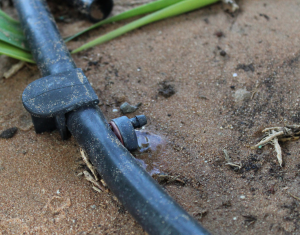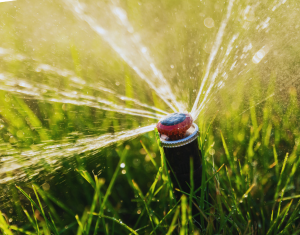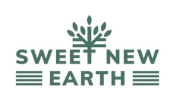Soaker Hose vs Drip Irrigation

Ever wondered about the difference between soaker hoses and drip irrigation?
You’re not alone—and you’re in the right place.
With water conservation more important than ever in 2025, choosing the right irrigation method can make all the difference. In this guide, we’ll cover:
- What a soaker hose is and how it works
- The ins and outs of drip irrigation
- Which option is best for your garden
- Why it matters for water efficiency and plant health
- …and plenty more!
Whether you’re a weekend gardener or a seasoned pro, this ultimate comparison will help you make the best choice for your garden. Let’s dive in!

Soaker Hose vs Drip Irrigation: Which One Is Better?
Soaker hoses and drip systems have different sets of advantages and disadvantages that suit different types of gardening needs.
We did a side by side comparison of each so you can see for yourself and make the decision on what watering system to use.
Soaker Hoses
Soaker hoses are long porous hoses that leech out water along the length of the hose.
They lie on top of the surface of your soil, and water anything and everything that sits under the length of the tube. This is much different from a garden hose.
A garden hose is a lengthy piece of tubing that flushes out water through one opening at the end of the line. In comparison, a drip hose offers more flexibility and connection options, and can be used both above and below ground, ensuring proper water flow for irrigation.
Soaker hoses can range greatly in both material and quality.
Most on the lower end are made of recycled rubber, whereas on the higher end, you can get some made of stronger material.
Soaker Hose Pros
The benefits of soaker hoses are:
- No clogs
- Easy Installation
- Small investment
- Not complicated
No Clogging
Unlike drip tubing, you don’t really see clogging with soaker hoses.
This is due to the fact that soaker hoses are one long length of water emitting tubing where as drip irrigation has specific, pressure compensating emitters that sometimes get clogged.
Soaker hoses maintain consistent water delivery by ensuring an even flow throughout the entire length, which helps prevent clogs.
Soaker hoses don’t really require maintenance other than un-kinking a line every now and then.
Easy Installation
Soaker hoses don’t have a complicated installation. You run the tubing and turn on the water.
Installing a one-way valve can help control water flow and prevent backflow.
Even though we end up recommending drip over soaker hoses, sometimes a small time or hobbyist gardener just wants to turn on their water and get the crops what they need. We understand that completely.
Small Investment
Some of the best soaker hoses are much cheaper than drip tubing. This isn't debatable: they are much simpler systems, have less parts, require less planning and are all around: simpler. Simpler doesn't always equate to efficiency, however, as well show you below.
Not Complicated
We've said this a few times now but sprinkler hoses just aren't complicated. Their appeal is that you lay the hose down and turn on the water and then you have water on your plants.
This doesn't take into account the watering of weeds, soil run off, the inefficient watering system, etc. but soaker hoses do serve a purpose.
Soaker Hose Cons
Some downsides to soaker hoses are:
- They aren't very customizable
- No precision
- Can't be installed underground
Less Customization
Unlike drip tubing, soaker hoses are going to let water out for the length of the tubing. Wherever you put the hose, you will be watering that spot.
Imprecise
Soaker hoses aren't too precise. As we said above, they let water out of the tube wherever the tube lies unlike drip systems which are much more targeted.
Can't Be Installed Underground
One of our favorite features with drip tubing is that it can be installed underground. Out of site, out of mind.
If you are concerned with aesthetics, keep in mind that a soaker hose system can’t be installed underground so you are going to see it run through the garden.
However, soaker hoses are designed to ensure that water reaches the roots of plants effectively, promoting better irrigation and plant health.

Drip Irrigation
Drip irrigation systems are long lines of tubing or tape with small holes in them run throughout the garden and deliver water in a slow and controlled manner to your plants.
Unlike sprinkler irrigation, which blast water over a large area, drip irrigation works by delivering small amounts of water at precise locations (i.e., the crop's root zone). There are a different types of drip irrigation systems, such as drip line and drip tape.
Drip Line
Drip lines are made of heavier-duty round-style tubing. Drip line is sturdier than tape or soaker hoses and meant to last much longer.
Drip line is very customizable. If you have a unique garden setup (aka, one that wasn't really planned - been there before), you can buy drip lines with separate emitters and install them yourself.
If you have crops at more regular intervals, you can buy drip lines that have emitters at set locations.
Drip Tape
Drip line is flat tubing that works well for installations right under the surface of the ground. Drip tape is long, thin walled tubing meant for straight row crops.
It typically only lasts a few seasons, and it needs a pressure reducer on the waterline to ensure it functions right.
Pros
We already have an extensive guide on drip irrigation but we will cover some of the basics here.
Some of the biggest benefits of a drip system are:
- Saves Water
- Improves Plant Growth
- Prevents Weeds
- Time efficient
- Helps control fungus and disease
- Customizable
Saves Water
Drip irrigation's top feature is that is saves water.
Unlike soaker hoses, or sprinkler irrigation, drip lines have emitters along the entire length of its tubing that deliver water precisely where you want it (usually the root ball of the plant).
Soaker hoses pour out water along the entire length of the hose.
Drip line is more efficient. Drip line takes a targeted approach to watering whereas soaker hoses blast the area with water.
On top of that, drip systems come with a pressure regulator so you control the amount of water released at each emitter.
Improves Plant Growth
With a controlled water system, you can carefully water the plants you have according to their specific needs.
This drastically improves plant growth because your crops will get what they need, when they need it.
There's no excess water either, so you limit the amount of soil runoff.
Prevents Weeds
As drip systems only deliver water where the water emitters are located, you don't have excess water going into the earth meaning you aren't feeding any weeds.
Water is delivered right where it is need: to your crops, and nowhere else.
Time Efficient
We like this one a lot. Drip systems are very "set it and forget it." Installing drip irrigation is most of the work but once it's installed, you can put it on a timer so that it water's at regular intervals.
I can remember the days my dad would drag around the garden hose and sprinklers trying to get water across our lawn - it was simply inefficient. Get yourself a proper irrigation system.
Fungus and Disease Control
This one is important. Fungus can ruin any good crop. With drip irrigation, you don't have all that overhead spray so you only get water to the roots of the plants.
The leaves of your plants or crops stay dry, and dry is exactly what fungus hates. No wet foliage!
Customizable
As we said before, you can customize your drip irrigation system to whatever gardening needs you have.
If you want to plant in straight lines, you can buy pre-made kits. If you have a garden setup all over the place, you can buy separate emitters and build accordingly.
Drip Tape Cons
The negatives of drip irrigation come are:
- Investment
- Maintenance
Big Up Front Investment
Drip irrigation can be a bit pricy. You have to make a big initial investment to get the kit, install the kit and set it up over time.
Not only that, but it requires more extensive planning than simply laying a piece of tubing on the ground.
Maintenance
If an emitter gets clogged, you'll find yourself frustrated with your system.
Regular inspection and maintenance can prevent this but we must acknowledge it. Depending on the cleanliness of your tap water, this is a bit rare but it can happen.
Installation
Some people find installing drip irrigation to be complicated and frustrating. We get it. This is often the result of inexperience or just buying a low quality kit. Be sure to check out our guide on the best drip irrigation system so that you won't find yourself in a bind.
Drip Irrigation vs Soaker Hoses
The differences between soaker hose and drip irrigation are palpable. Where one falls short, the other makes up for - they are almost like yin and yang.
If you are looking for something quicker and easier, and to be honest, simpler, then you may want to go for the soaker hose.
If you have an extensive garden with specific needs, then you probably want to go for a drip irrigation system.
Soaker hoses have less precision but simpler installation. A drip irrigation system is much more precise and much more complex to install.
That being said, once a drip irrigation system is in the ground, it becomes as simple as any watering system (assuming it doesn't clog).
Sweet New Earth Final Verdict
As you my have guess, we will always go with a drip irrigation system.
Drip systems are:
- Time efficient
- Water efficient
- Better for overall health of the garden
- Higher quality
Anything that saves time usually is resource-efficient. But with drip irrigation, you can have your cake and eat it too!
We love that a drip system will only supply the exact amount of water you need to give to the plant to optimize its health.
Drip irrigation doesn't have porous holes the entire length of the tube, only at certain locations so that means it doesn't water potential weeds, and it contributes much less to soil run off. For those reasons, we believe drip irrigation systems are much more suited out our needs.
The market for drip irrigation is absolutely booming and projected to be even bigger by 2026 [1]. And it's obvious why. It's efficient, aesthetic, and above all, helps us conserve our water supply. It's a no brainer to buy a drip system.
Before you go...
Thanks for stopping by! We hope you enjoyed this article on drip irrigation vs soaker hoses.
We tend to lean towards irrigation systems when it comes to watering your garden, but if your heart is set on a soaker hose, we have in-depth guides covering both.
Read whatever article you want for whichever irrigation system you decide on...
Related Articles:

Carl Anderson
Carl Anderson is an avid outdoorsman with a keen interest in writing about and reviewing tools. He has over 20 years of writing experience and the only time he isn't feverishly typing away at his computer is when he's outside in nature working on his projects. You can learn more about him here.
Join our community!
Join to receive guides, insights, and the latest gardening deals!
